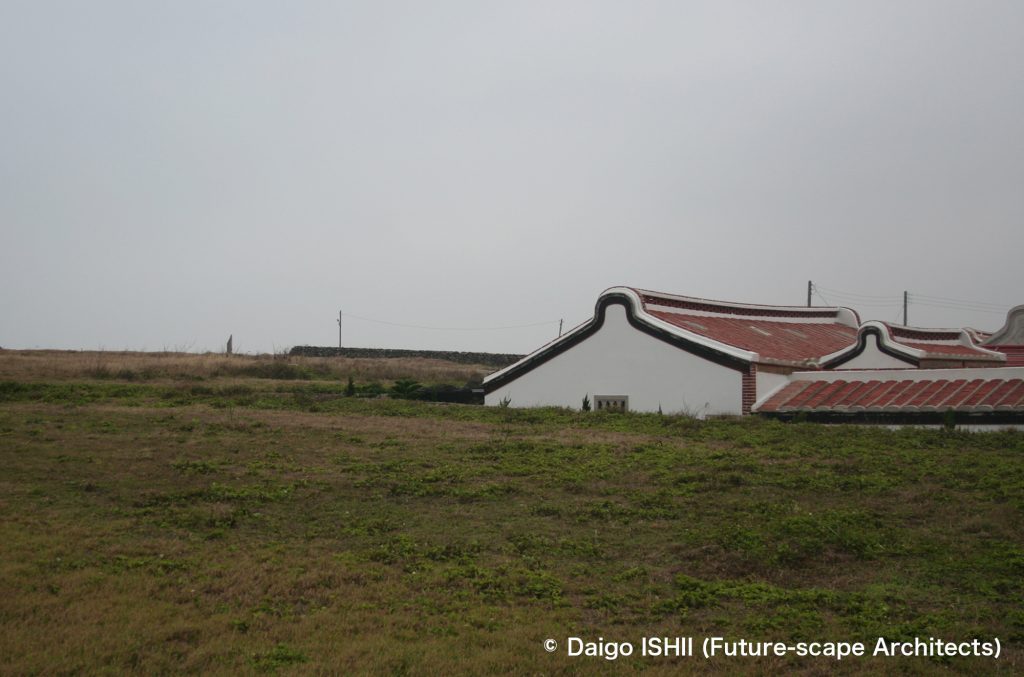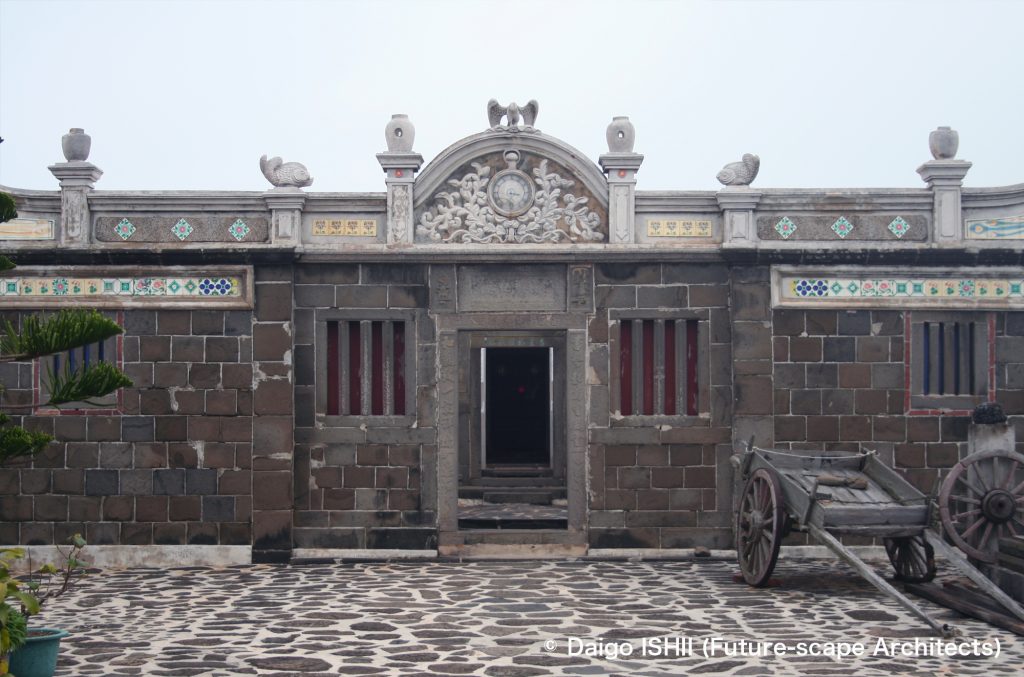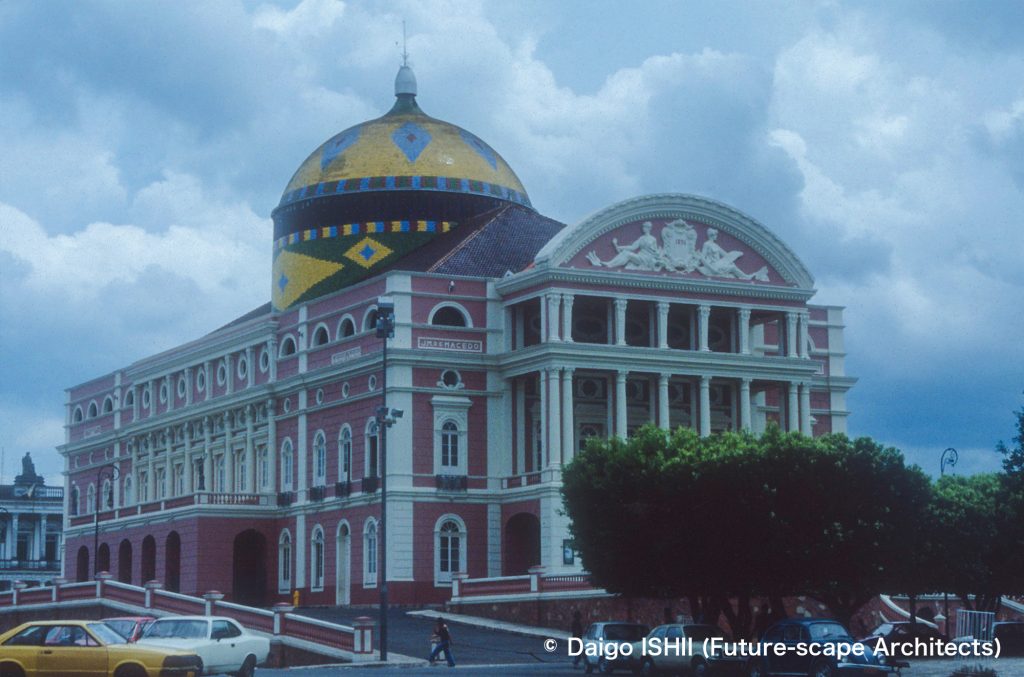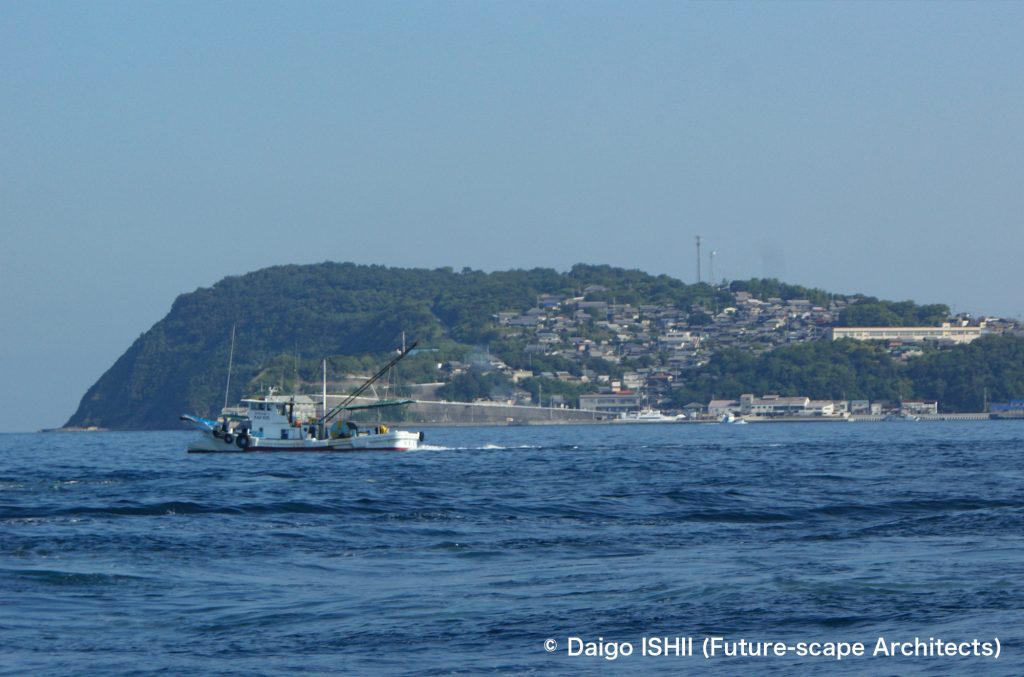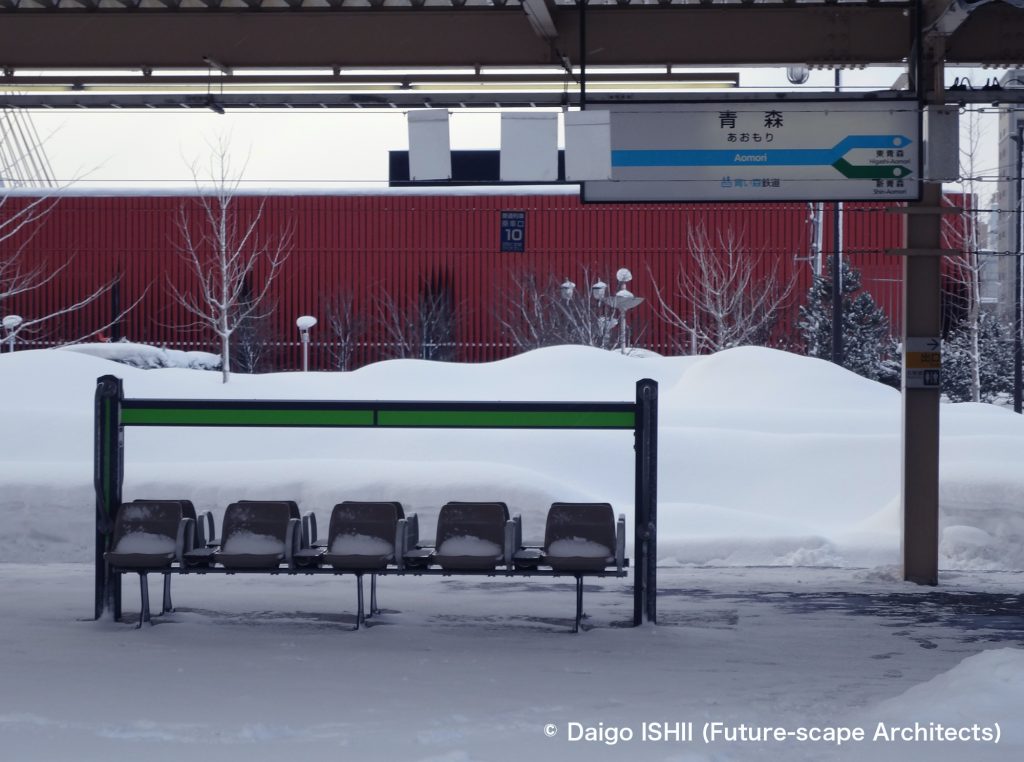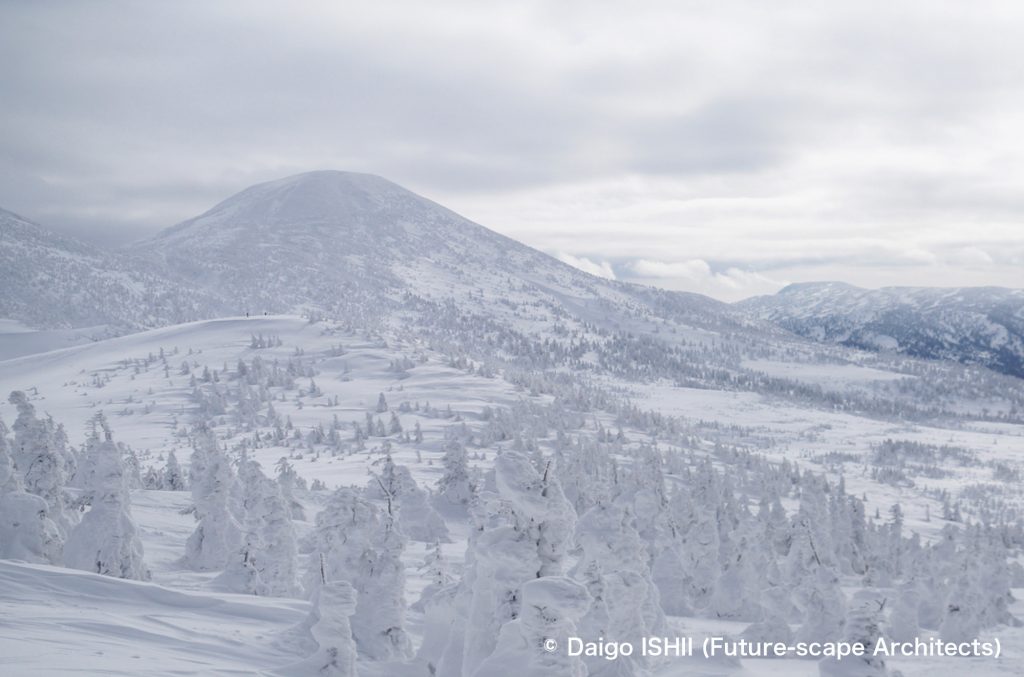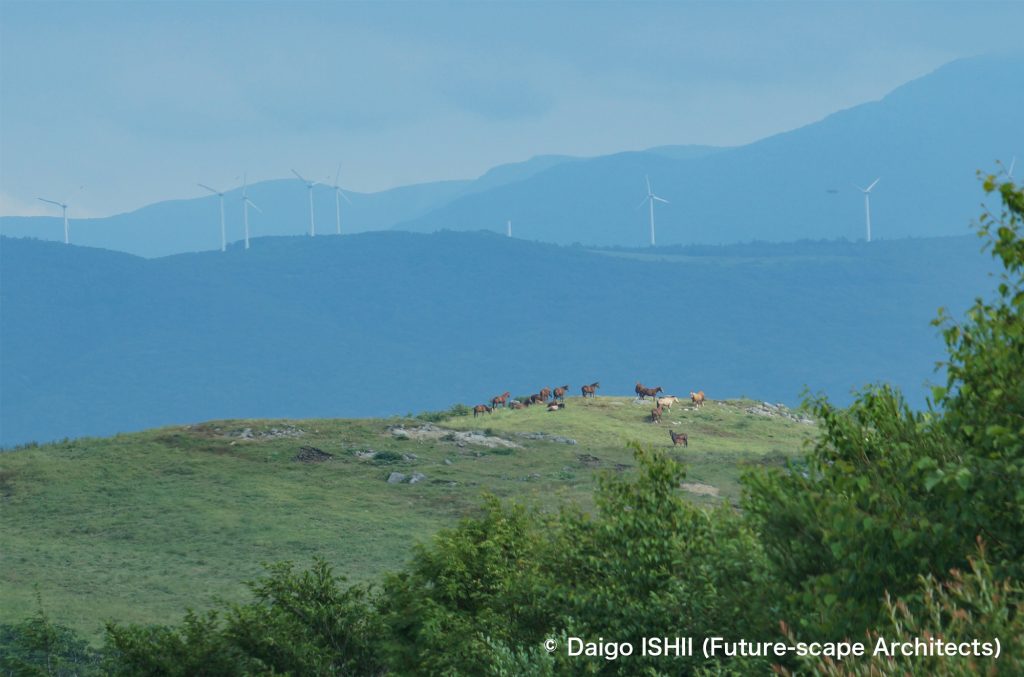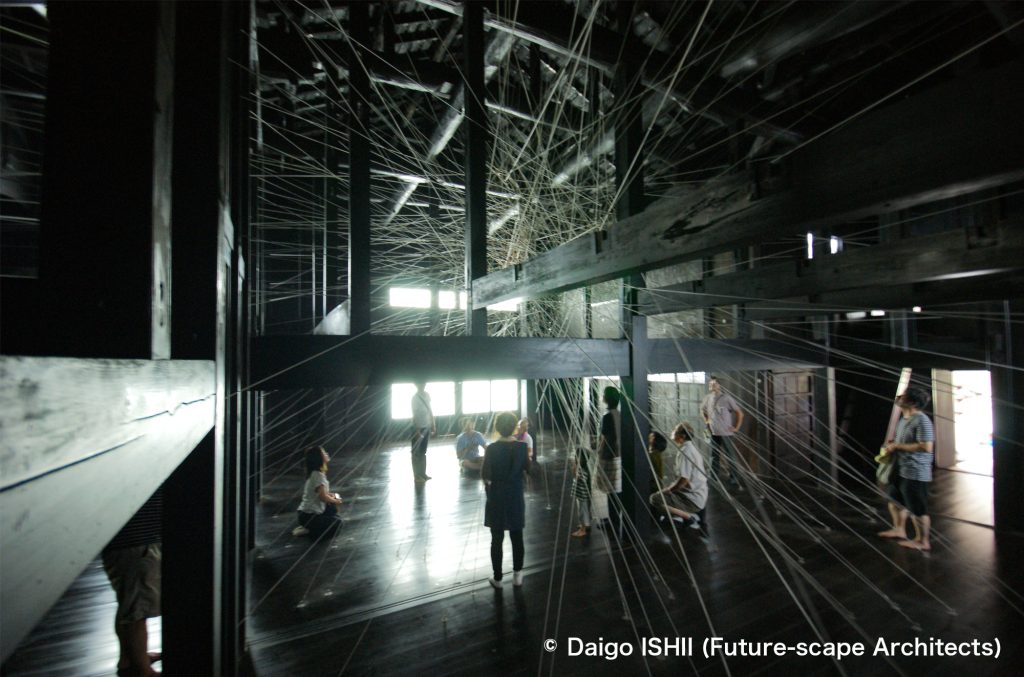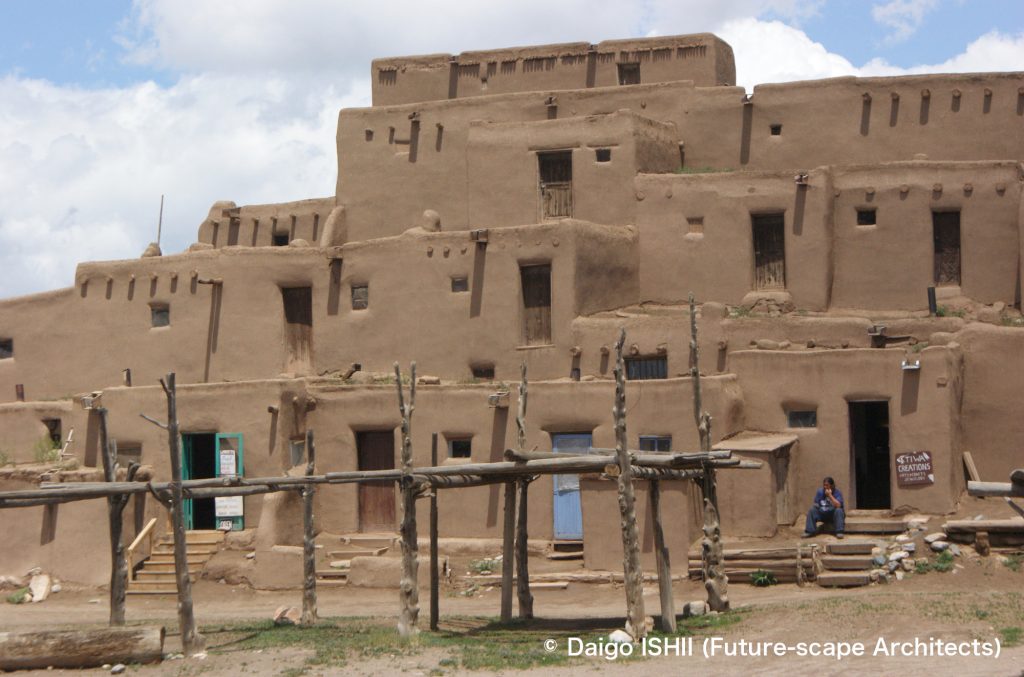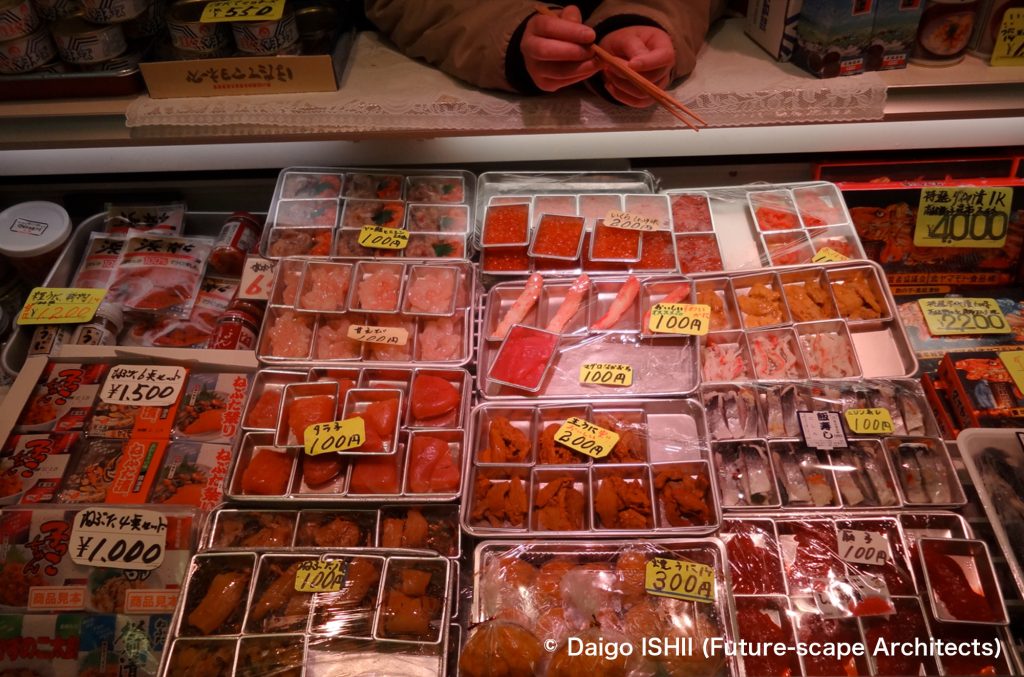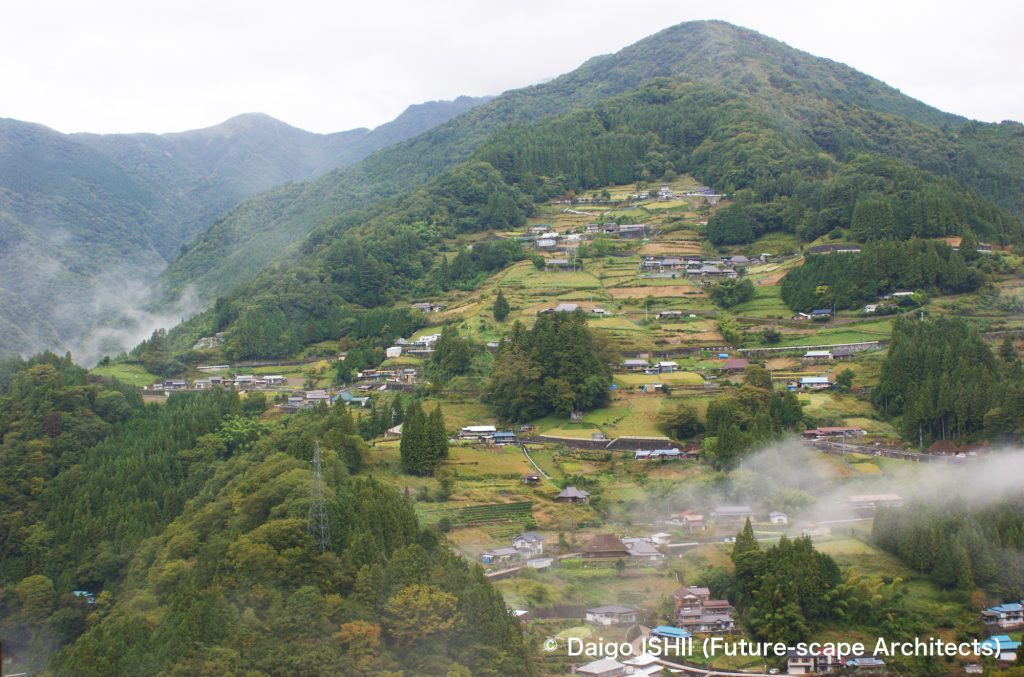Erkan is the traditional village that represents the Penghu Islands.
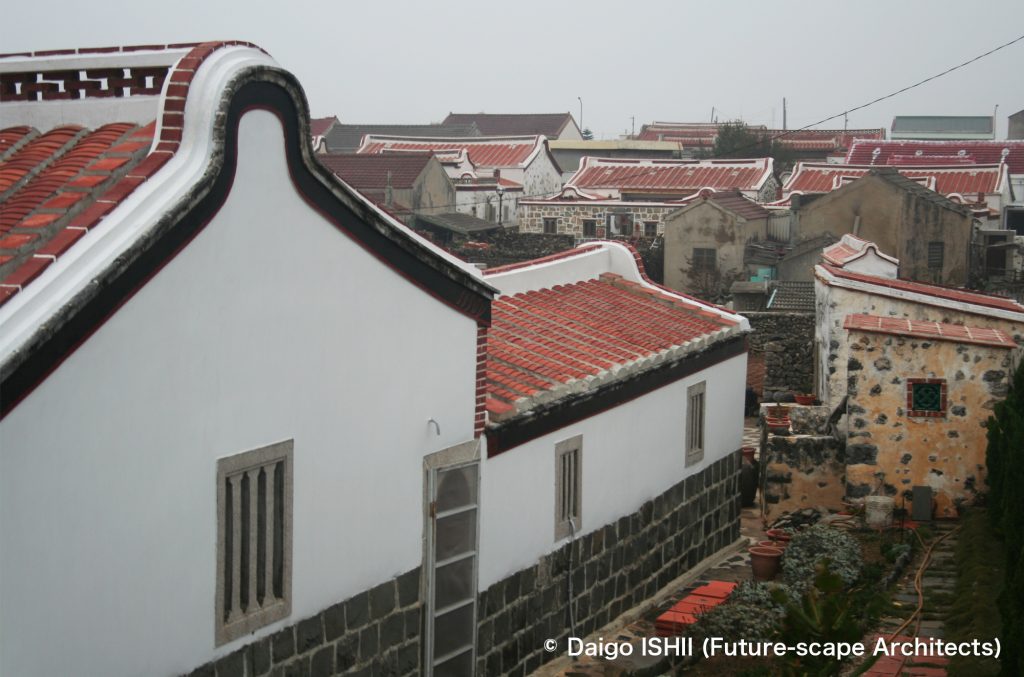
It takes one hour from Magong, the central city in the Penghu islands, to Erkan, the innermost village of Yuweng Island, crossing several sea bridges. Houses were clustered in a depression in the center of a gently undulating farmland. When viewed from a distance, only the roofs protruded from the ground. That was to avoid strong winter winds.
Most houses had a wall that piled up coral stones and painted white. A roof with red tiles was firmly bedded in plaster to prevent from blowing away by the wind. The plaster part was integrated in one with curves and was elegant. The structure of a house was a traditional Chinese style surrounding a courtyard. It had a gate on the entrance side, and other three sides were buildings. When the entrance side was a building, it is called a Siheyuan style with four buildings. The wind-sheltered courtyard was perfect for the Penghu climate. A part of the roof was flat to dry vegetables and fish. I wondered if it will be blown away by strong wind. Since a flat-roof Siheyuan-style house seemed not to exist in Mainland China, it was a locality of the Penghu Islands.
The village grouped houses. Perhaps that was to avoid the wind. Narrow alleyways, which passed through between each house, divided the village in a grid pattern. The inside of the village had an urban and intellectual ambient that I unexpected in a quiet, remote island.
Many traditional villages remain on the island, but the abandoned houses conveyed me about the seriousness of the outflow of people. Erkan showed the contrast with other villages. One of the reasons was because Erkan was designated as the first conservation area in Taiwan in 2001 and became an object for restoration projects. When I visited in 2007, there was no souvenir shop but only one guest house, and only one group of tourists visited other than me (it may be because it was winter). However, now the situation was changed greatly. According to the recent appearance of Google Street View, many old private houses have been transformed into souvenir shops. Over the past 20 years, tourism has revitalized the remote village due to the beautiful scenery that restoration revived. The effect of landscape preservation is auspicious. On the other hand, the dramatic change of the past 15 years also shows difficulties for keeping a delicate balance.
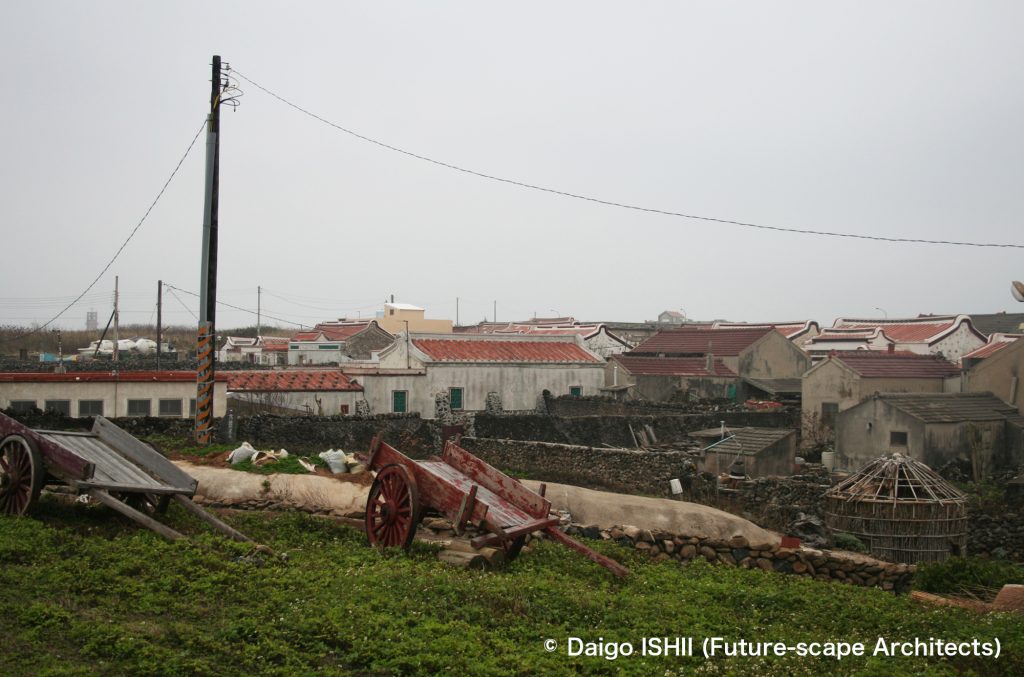
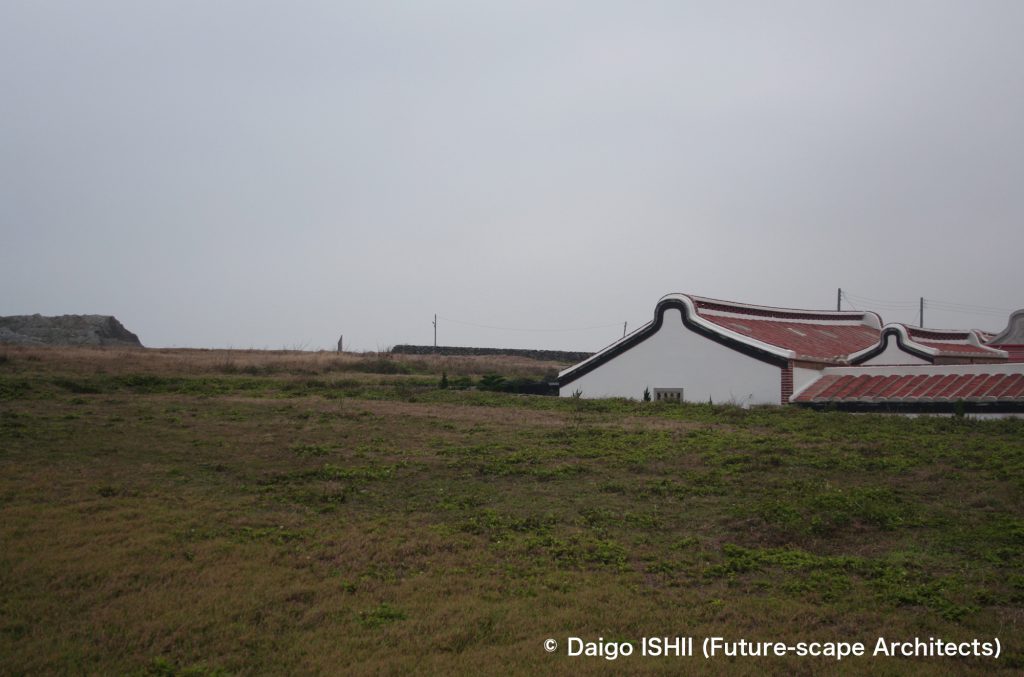
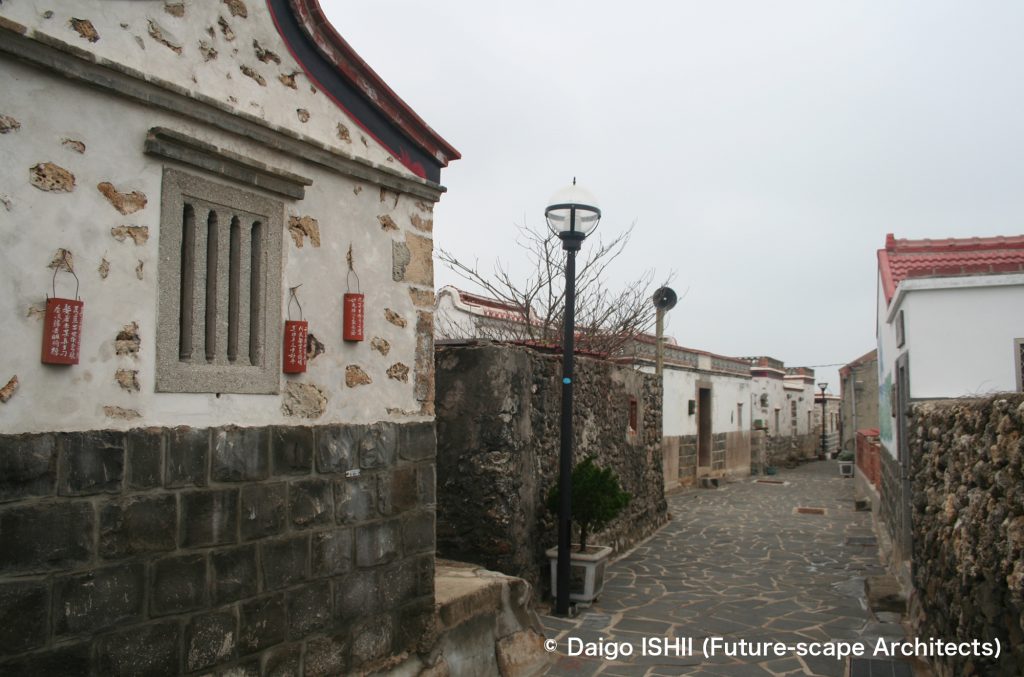
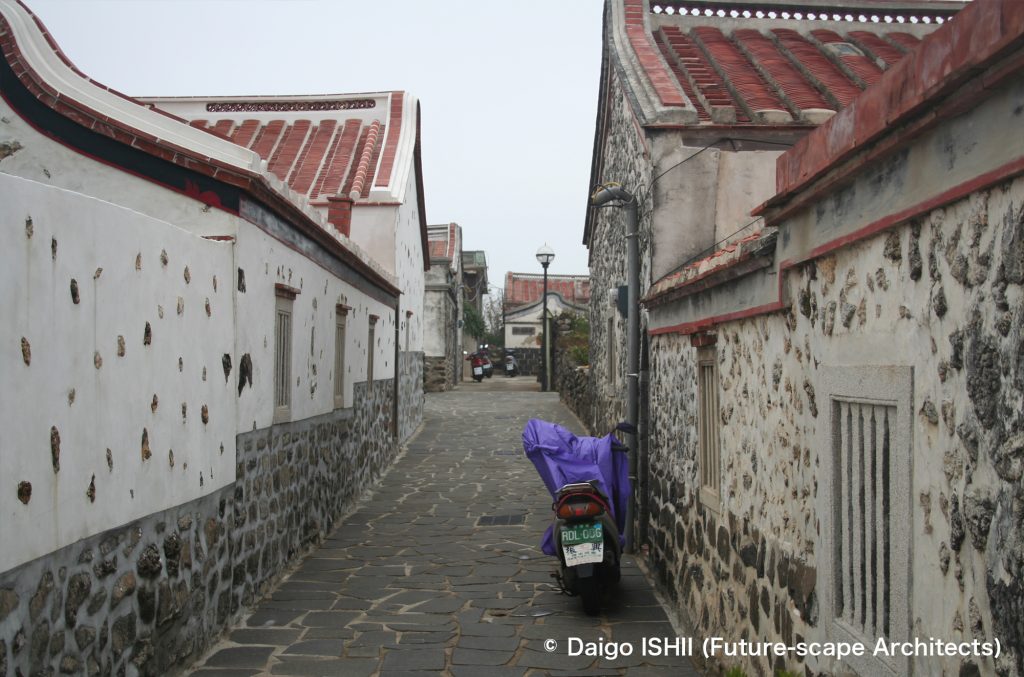
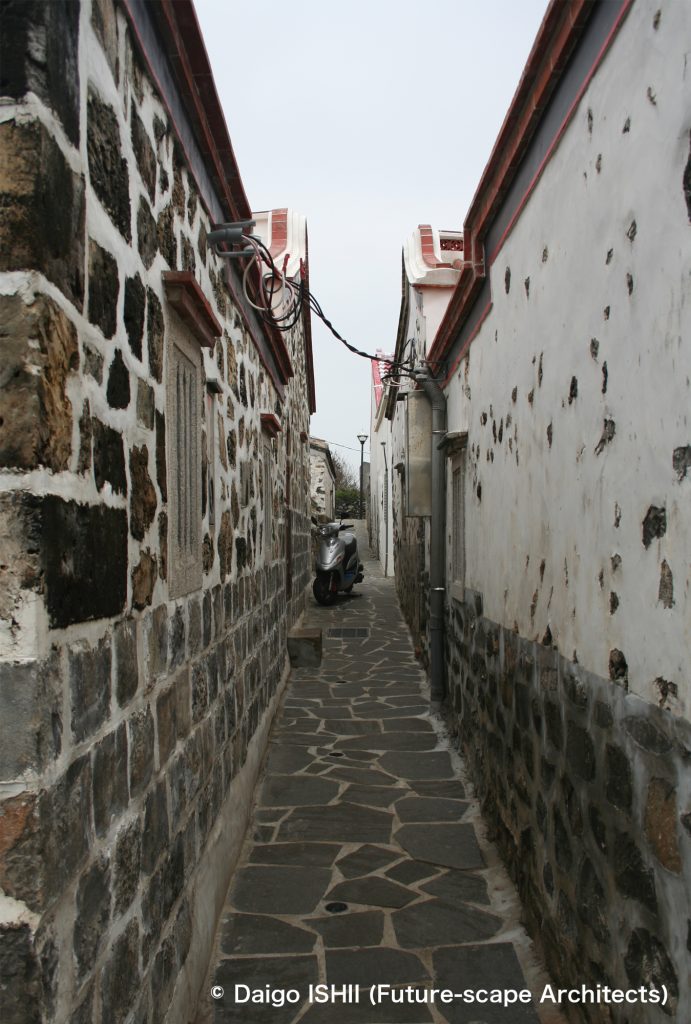
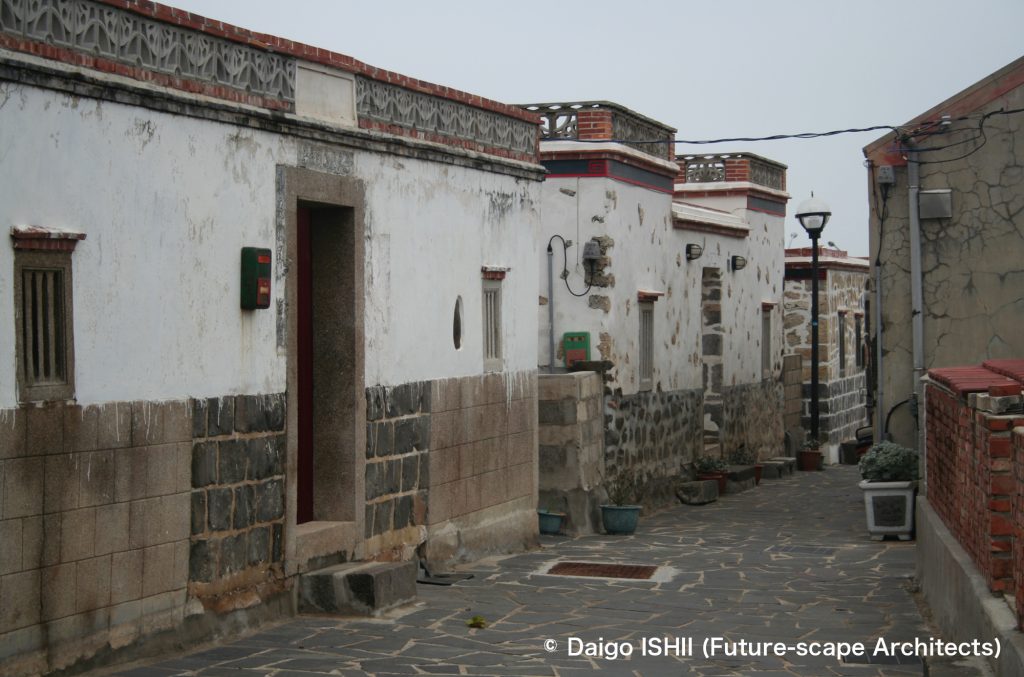

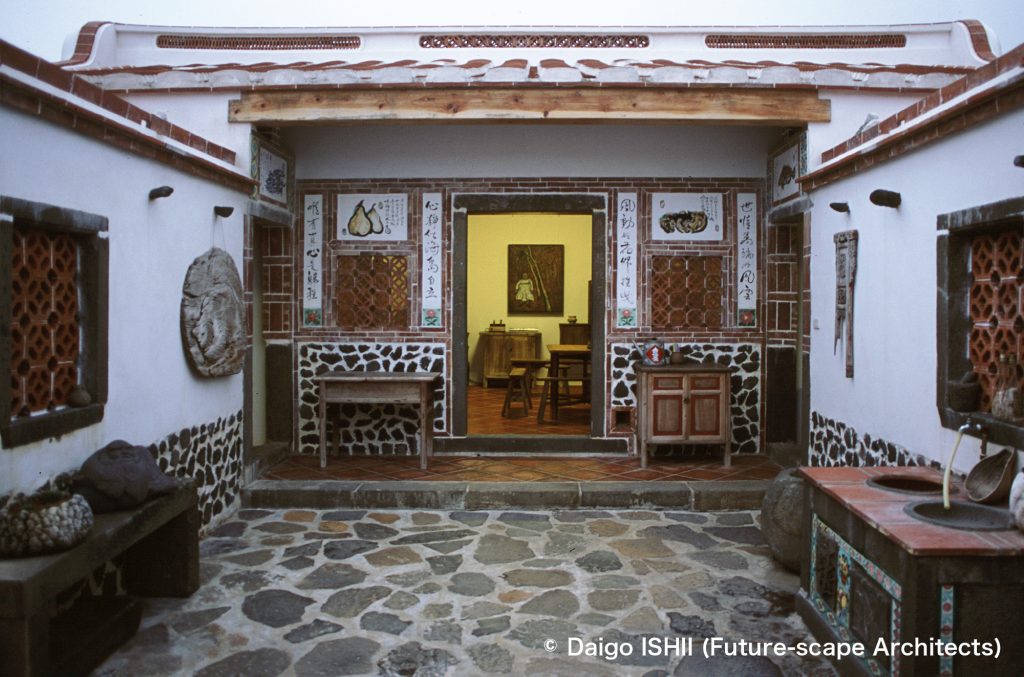
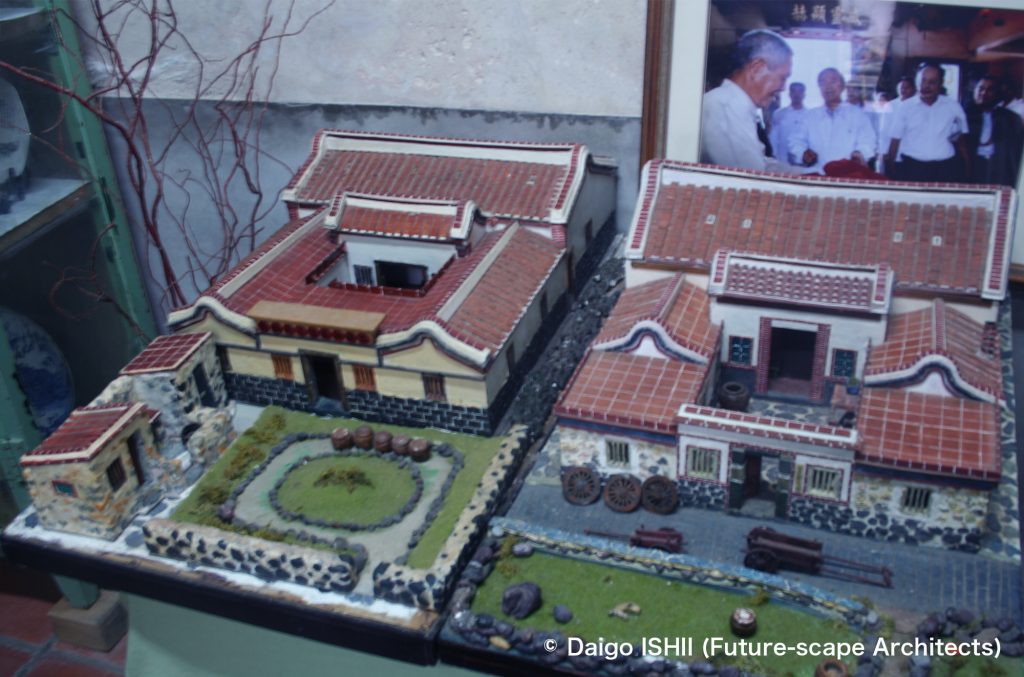
Click here for your impressions
reference
台湾ナビ
Penghu Info
Wikipedia
Please do not use or upload our photos without permission.




